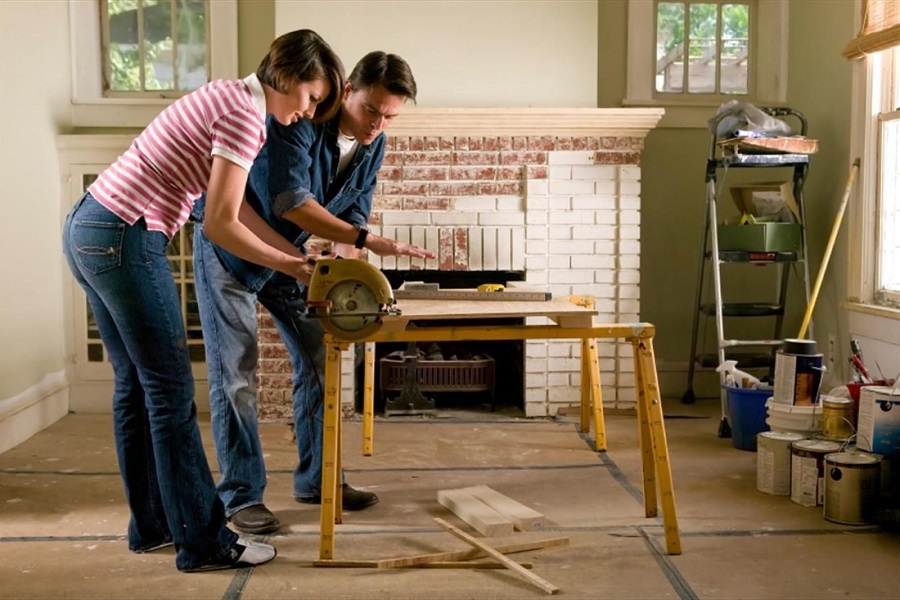DIY Home Improvement: The Safe Way

Do-it-yourself projects are a great way to feel accomplished while creating something useful for your household. It gives a sense of fulfillment, especially when you’ve finished your project and you get to use it every day. Nowadays, DIY projects have become increasingly popular, with many commercial establishments supporting the movement by providing products that assist individuals in their efforts.
DIY home improvement is all the rage now, too, with TV shows, online series, and blog posts all dedicated to it. There’s a growing number of people getting into DIY projects to improve their homes, to the point that it’s become a hobby of its own. Perhaps you’re reading this because you’re interested in home improvement, too.
However, DIY hobbies can pose some risks. Of course, you can minimize these issues with continuous practice, but there are inevitable hazards that you need to be aware of. It can be something simple like equipment and tools falling on you or something highly dangerous like short-circuiting something or wounding yourself with power tools.
It’s important to keep safety in mind, and below are some ways you can ensure that your DIY project remains safe and injury-free.
Do Your Due Diligence and Read the Manual
Regardless of how basic your project is, it won’t hurt to understand it thoroughly. Study how to do it right, learn the necessary steps and instructions to guarantee safety. Know when it’s best to do it and what equipment you need to use. Reading the manual goes a long way, as you’ll know the proper way to do the project. Many instructional guides also provide information to help you avoid errors. This will save you from potential injuries and other costly mistakes.
Remember Your Safety Precautions
If you’ve done DIY projects before and are particularly good at it, you might fall into complacency and not follow the common safety procedures. Do not fall into this pit. You never know what can happen. Always remember basic safety tips: have thick padded gloves when you’re dealing with something sharp and heavy, such as with metal or wood. Always wear a helmet if your project consists of something taller than your height. It’s the little safety precautions like this that can create a safe environment for you.
Prepare Your Workspace
Make sure that your working area is clean and tidy. Having a lot of clutter lying around can confuse you midway into your project. It can also result in unnecessary dangers and will only cause delays. Having your equipment laid out and ready helps a lot, as it means less time spent putting down your tools to go and look for other stuff. It’s also crucial to remember to keep your children or pets out, as they can walk in and hurt themselves.
Know When to Call the Professionals
Sometimes, DIY simply isn’t enough. There will be moments when it’s better to just call professionals to do it for you. Projects like repairing a metal roof, changing electrical outlets, and fixing your plumbing are better left for the professionals. Some tasks actually require a license to accomplish, and you don’t want to injure yourself doing something you were never qualified for in the first place.
Keep a First Aid Kit Nearby
Small nicks and cuts are part of every DIY enthusiast’s experience, but that doesn’t mean you should just ignore them. Having a small wound while working and then ignoring it just to continue working can expose it to bacteria that can lead to infection. Keep a first aid kit near you at all times. The effort it takes to dab some disinfectant wipes over a small gash can be paramount to overall safety.
Take Breaks
You might be feeling excited and would rather go at it the whole day non-stop, but it’s important to take breaks every now and then to replenish your energy. Doing a project when you’re fatigued will lead to errors during execution and lead to dangerous situations where you hurt yourself because you’ve lost control. Take a breather. You perform best when you’re energized.
Have a Plan B
What do you do if you mess your project up? Can you afford a do-over, or do you need to contact a professional? Do you have emergency contact numbers ready? It might seem like overkill thinking of these things, but when you slip up and you’re caught in a situation you don’t want to be in, you want to be prepared.
These are just simple tips to keep you safe. Ultimately, it’s in how you approach your project. Just remember to keep safe at all times and to have fun while you’re doing it.